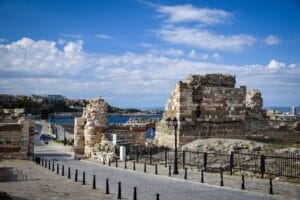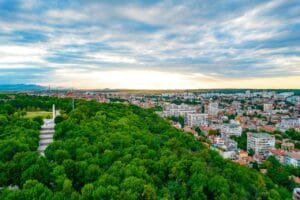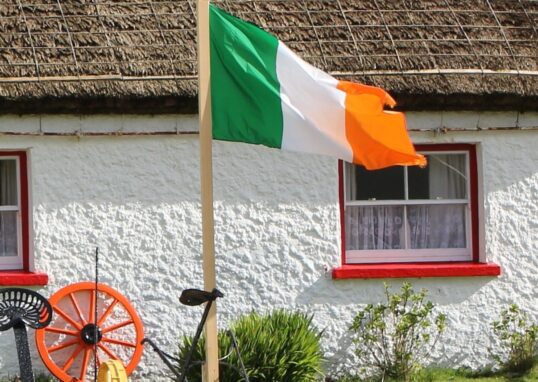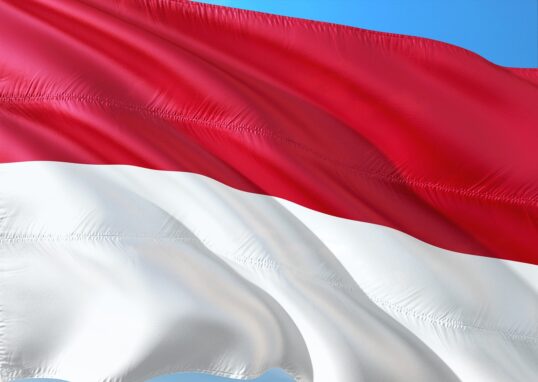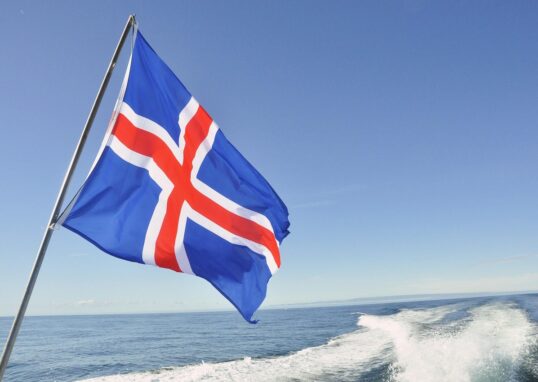
🏛️ The Ancient City of Nessebar, Bulgaria
The Ancient City of Nessebar is Europe’s most breathtaking and historic town. It stands on a small rocky outcrop along the Black Sea coast of Bulgaria. Nessebar has also been called the “Pearl of the Black Sea” because it has a special character and rich history. The town is more than 3,000 years old. It has seen the birth and death of numerous empires. Thracians, Greeks, Romans, Byzantines, Bulgarians, and Ottomans have all left their mark here. There is history around every corner of Nessebar. Nessebar is also a UNESCO World Heritage Site. It was added in 1983 because of the well-preserved churches, ancient ruins, and cultural sites. If you walk along the cobblestone streets, history comes alive. Nessebar, however, is a tourist resort popular among crowds. There are tiny shops, family restaurants, art galleries, and homey hotels there. Tourists can feel the blend of old customs and new cordiality. Here, you will discover Nessebar’s history, architecture, daily life, cultural treasures, and nearby attractions. You will see why the city is a haven for tourists who love history, culture, and sea. 
History of Nessebar
Nessebar’s past stretches thousands of years ago.
Thracian Beginnings
The Thracians were the first inhabitants. The Thracians named the settlement Menebria, or “the city of Menes.” It was occupied by the Thracians during the first millennium BC. The Thracians defended it and turned the peninsula into a stronghold.
Greek Period
Greek colonists from Megara occupied the city during the 6th century BC. The Greeks renamed Mesembria. The Greeks built temples, public buildings, and imposing walls. The Greeks introduced with them the minting of coins, indicating the wealth and stature of the city. Nessebar was an economic center. It connected the world of the Greeks to the Thracians towards the interior. The mix of culture gave the city a robust sense of identity.
Roman Rule
In the 1st century AD, Nessebar became a part of the Roman Empire. In the Roman reign, the city flourished. The Romans built baths, new defenses, and public buildings. Archaeological remains from this period still remain today.
Byzantine Period
After the fall of Rome, Nessebar came under Byzantine rule. This brought tremendous cultural development. Many of the city’s famous churches were built under Byzantine rule. Nessebar was a dominant Christian center.
Medieval Bulgarian Rule
Nessebar was exchanged from the Bulgarian Empire to the Byzantine Empire several times. It was a major Bulgarian city between the 9th and the 14th centuries. Additional churches were built, and the town gained fame through its art and architecture.
Ottoman Period
The Ottoman Empire took Nessebar in 1453. It slowed down with life, and the city was less significant. However, new wooden houses were built in Ottoman fashion. The majority of them are still there.
Modern Era
In the 19th and 20th centuries, Nessebar revived. The period of the Bulgarian National Revival witnessed new architecture and cultural activity. Nessebar is now a lively blend of the past and present.
Architecture and Monuments
The Ancient City of Nessebar is an outdoor museum. At every corner, you will see old churches, ruins, and traditional houses.
The City Walls and Gates
The ancient fortification walls are some of the first impressions the guests get. The remains date back to Thracian, Roman, and Byzantine times. The principal gate still stands tall, showing the defensive capabilities of the city.
Churches of Nessebar
Nessebar has also been called the “city of 40 churches”. They are not all still here, but most of them are still standing.
- Church of St. Sophia (Old Bishopric): Built in the 5th–6th century, this basilica is one of the most impressive survivors.
- Church of Christ Pantocrator: A 13th–14th-century church famous for its brickwork and ornate decoration.
- Church of St. Stephen: Renowned for its frescoes adorning the interior walls.
- Church of St. John the Baptist: One of the smallest churches with marvelous stonework. Church of St. Paraskeva: Famous for its intricate design.
Both these churches are representative of Byzantine and medieval Bulgarian art. They reflect how important Christianity has been to Nessebar’s history.
Traditional Wooden Houses
Nessebar also boasts its 19th-century wooden houses. They are examples of Bulgarian Revival architecture. They have stone foundations and wooden upper floors that jut out. Walking in the narrow houses-lined streets is like stepping into a different era.
Archaeological Museum
Nessebar Archaeological Museum boasts many artifacts from ancient times. Coins, ceramics, icons, and jewelry talk about the city’s history.
Religious Importance
Nessebar has always been a religious center. Its many churches are evidence of its inhabitants’ rich Christian heritage. The city used to have approximately 40 churches, and it is with this that it acquired its nickname. Every church is unique in its appearance. Some are simple, while others are richly decorated. The churches also feature wonderful frescoes and icons. They are not decorations. They are depictions of stories from the Bible and Christian societies. They also display the skills of the medieval artists. Today, there are a few churches still serving as places for worship. There are museums or cultural centers too. People can enjoy their beauty and enjoy the religious heritage of the city.
Daily Life in Old Nessebar
Walking in Nessebar is an extraordinary experience. The cobble streets are extremely narrow and warm up the atmosphere. The streets are lined with tiny souvenir shops, jewelry, and handicraft shops. The locals are friendly and take pride in their town. Some of the local families have small guesthouses and restaurants. Fresh fish and traditional Bulgarian dishes are available. The wooden balconied houses make the old town so romantic. Cats pace the streets, and flowers are draped from the windows. Life is so tranquil and ageless here.
Tourist Experience
Nessebar is a popular tourist destination, but it is still charming. The tourists can enjoy sea and history.
Museums and Galleries
Besides the Archaeological Museum, there are small art galleries. The local artists exhibit paintings and crafts depicting the town.
Walking Tours
There are guided tours that one can take to visit the churches and monuments. Walking tours are ideal for viewing the old town.
Food and Restaurants
Seafood is fresh and that is Nessebar’s specialty. There are local restaurants that serve Bulgarian traditional food such as banitsa, kebapche, and shopska salad.
Beaches and Sea
There are attractive beaches that one can access in Nessebar. There is swimming, sunbathing, or boat trips.
Photography
Nessebar is a photographer’s paradise. There’s no one in the streets, churches, or views of the sea that isn’t an image-perfect picture.
The Black Sea Connection
Nessebar’s history has always been tied to the Black Sea. The harbor is tiny and contains fishing boats moored there. Fishermen still offload fresh catches daily. Sightseeing boat excursions within the peninsula are favored. Travelers are able to see the town from the sea and enjoy beautiful scenery. Nessebar’s beaches nearby are sandy and clean. Sunny Beach, one of Bulgaria’s largest resorts, is just a short distance away. The sea also influenced Nessebar’s culture. The town was linked with Greek, Roman, and other merchants. This enriched Nessebar and made it multi-sided.
🌴 Sunny Beach
Sunny Beach is Bulgaria’s most visited resort. It is only 5 km from Nessebar and thus very convenient to visit.
Why Visit Sunny Beach?
Sunny Beach is perfect for those who like the sea and fun. The resort has an 8 km golden sandy beach. The beach itself is tidy and spacious, while the sea is shallow, making it suitable for children and families too.
Activities
- Swimming and Sunbathing: Number one activity is, of course, the beach. You can sunbathe on sun loungers or try water sports.
- Water Sports: Jet skiing, banana boat rides, parasailing, and windsurfing are popular.
- Nightlife: Parties at Sunny Beach are renowned. Clubs, discos, and beach bars do not close until morning. Young visitors find the culture enjoyable.
- Family Fun: Aquaparks like Action Aquapark and Aqua Paradise, close to Nessebar, are visited by families. Slides, pools, and performances are enjoyed by them.
Hotels and Food
Sunny Beach has a large number of hotels, ranging from budget hostels to luxury resorts. All-inclusive hotels abound. The restaurants have Bulgarian and world cuisine.
Atmosphere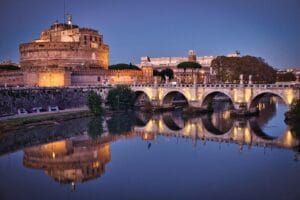
Sunny Beach during summer is crowded and lively. It’s in contrast to Nessebar’s tranquil and historic environment. The majority of tourists go to both places—spend their day in Nessebar and have fun in Sunny Beach nightlife.
🏛️ Sozopol
Sozopol is another old town located about 70 km south of Nessebar. Sozopol is an ancient Black Sea coastal town with roots dating back to the 7th century BC.
Old Town Charm
Sozopol has an old town like Nessebar. The roads are narrow and the houses are made of wood and stone. The old churches and the small squares give it a romantic look.
History
Sozopol was founded by Greek colonists from Miletus. They called it Apollonia Pontica. It was an important trading port. Remains of ancient wall, temple, and ceramics are present.
Places of interest
- Archaeological Museum: Reveals ancient Apollonia artifacts. Southern Fortress Wall: Restoration of the historic defense. St. Ivan Island: Offshore island renowned for monastery and landscapes.
Festivals
Sozopol is famous for its Apollonia Arts Festival, which takes place in September. Musicians, painters, and actors come here. The town becomes all the more magical because of this activity.
Beaches
There are sandy beaches like Harmani Beach and Central Beach in Sozopol as well. These are favorites with locals and families.
Why Visit?
Sozopol is quieter than Sunny Beach and feels more authentic. It is ideal for travelers who enjoy history, art, and a relaxed atmosphere.
🌆 Burgas
Burgas is the fourth-largest city in Bulgaria and the nearest large city to Nessebar. It’s about 35 km away, making it a convenient stop.
Modern City with Culture
It is younger than Sozopol or Nessebar, but it has the modern conveniences with a splash of culture. It’s also where the nearest international airport is located, so many tourists make it a stopping point.
Main Attractions
- Sea Garden: Large sea-side park. Includes walking trails, gardens, restaurants, and open-air theaters. Centre point of Burgas activity.
- Burgas Lakes: There are several lakes in the vicinity of the city—Atanasovsko, Vaya, and Mandrensko. They abound in birdlife and are suitable for ecotourism.
- Museums: Ethnographic Museum, Archaeological Museum, Natural History Museum—all worth visiting.
Burgas Opera House: For concerts and other cultural events.
Beaches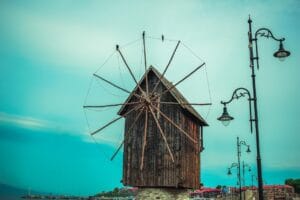
Burgas has long sandy beaches along the city. They are quieter than Sunny Beach but greatly entertaining.
Events
Burgas hosts music festivals like Spirit of Burgas, which attract world tourists.
Why Visit?
Burgas is a gateway city. It is practical, lively, and imbued with cultural spice. It mixes modern city life with nature.
🧂 Pomorie
Pomorie is a resort town in the area between Burgas and Nessebar, 20 km from Nessebar. Pomorie is famous for its therapeutic mud and salt lakes.
Healing Tourism
Pomorie Lake produces salt and mineral-rich mud. Spa therapy is practiced here by tourists to treat joint and skin diseases. The Pomorie Sanatorium is one of the oldest health resorts in Bulgaria.
History and Culture
Pomorie was an important trading and fishing settlement. The Thracian Tomb of Pomorie is an important archaeological site. It’s a 2nd–3rd century AD structure and can be visited.
Wine and Food
Pomorie also has vineyards and winemaking. The town has a number of wineries that provide Bulgarian wines to taste.
Beaches
Pomorie beaches are less in size but are quiet compared to Sunny Beach. They are good for family outings.
Why Go?
Pomorie is ideal for vacationers seeking relaxation and health. It presents a combination of spa tourism, culture, and peaceful seaside beauty.
🏖️ Varna
Varna is 100 km north of Nessebar. Varna is the largest Bulgarian Black Sea city.
History and Culture
Varna is full of history. The Varna Archaeological Museum houses the world’s oldest gold treasure, dating to 4,600 BC. The treasure is among Bulgaria’s best cultural sights.
Attractions
- Roman Baths: Remains of a large Roman thermal complex.
- Sea Garden: A beautiful sea-side park, larger than the Burgas one. It includes aquarium, zoo, and outdoor theatre.
- Varna Cathedral: One of the most symbolic buildings in the city.
- Dolphinarium: An entertainment facility appropriate for families with dolphin performances.
Modern Varna
Varna is also a modern city with malls, restaurants, and nightlife. It is young and dynamic because of its universities.
Beaches
Varna boasts several beaches within the city itself. Just outside the city, one has resorts like Golden Sands, Albena, and St. Constantine and Helena. These are famous for sandy beaches and mineral springs.
Why Visit?
Varna is a center of culture as well as the seashore. It is a destination that cannot be avoided by travelers who want to see history, city life, and laziness on the beach.
🍇 Vineyards and Countryside
The rural area around Nessebar is also worth visiting. The region is well known for wine growing, with ancient traditions.
Wine Tours
Tourists can take tours of surrounding vineyards. They can become acquainted with Bulgarian grape varieties like Mavrud and Melnik. Wine tasting is commonly accompanied by traditional Bulgarian food.
Villages
Small villages near Nessebar still retain ancient habits. Tourists can see rural houses, taste home-made food, and attend folk dances.
Natural Attractions
Strandzha Mountain: South of Burgas, this is rich in forests, rivers, and fauna.
Cape Emine: North of Nessebar, this is one of the most beautiful capes on the Black Sea. It offers great cliffs and hiking trails.
Travel Guide
How to Get There
Nessebar is highly accessible. The nearest airport is found in Burgas, just 30 km from there. Alternatively, the Varna airport is accessible. Buses and taxis connect Nessebar to nearby cities.
Best Time to Visit
May to September is the best time. Summer is hot and colorful. Spring and early autumn are quiet and cool.
Hotels and Accommodation
Choices are many in Nessebar. Guesthouses within the old town offer traditional charm. Comfort and luxury hotels along Sunny Beach offer.
Modern Nessebar vs. Old Nessebar
Nessebar has two parts: new town and old town. The old town is the ancient peninsula. The new town is larger and has new hotels, boutiques, and buildings. Tourists usually reside in the new town or Sunny Beach. They spend days walking through the old town. Such an intertwining of new life and old history makes Nessebar unique. Precautions are also taken to protect the old town from being over-run with tourists. The UNESCO status protects the monuments and culture.
Conclusion
Ancient City of Nessebar is a treasure of Bulgaria’s and Europe’s. It carries thousands of years of history in one peninsula. Thracians, Greeks, Romans, Byzantines, Bulgarians, and Ottomans have all left their imprint. Walking in Nessebar is walking through time. You stroll by old walls, medieval churches, wooden houses, and the wide sea. You hear stories in each stone and each street. Nessebar is also a living town. Humans still live there, work, and party. Tourists may enjoy local food, beaches, and cultural holidays. The landscape around helps add to the charm. From Sozopol to Sunny Beach, Pomorie, Burgas, and Varna, it is replete with places of interest for tourists. Nessebar shows the way history and modern times can peacefully coexist together. It is where tourists can learn, relax, and connect with culture.

